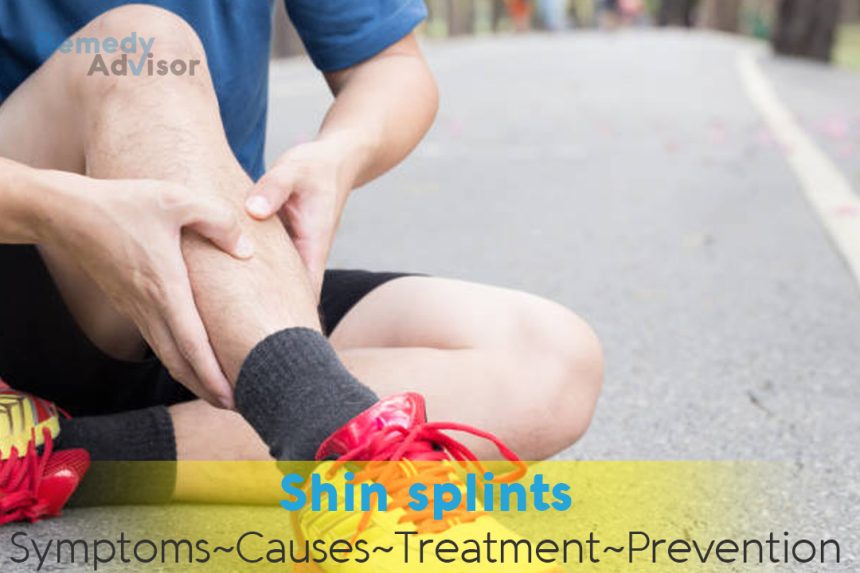What is it
The catch-all term “shin splints” refers to a family of overuse injuries causing inflammation of muscles and tendons of the lower leg usually the tissues surrounding the tibia, or shin bone. Characterized by pain in the lower leg, this condition, also referred to as medial tibial stress syndrome, is the most common overuse injury among runners.
During exercise, the muscles in the lower leg enlarge and press against the compartment formed by the two bones of the lower leg (the tibia and fibula). Repeated stress and pressure can cause irritation of the muscles, tendons, ligaments, or bones. Most commonly, the result is tendinitis. Initially, the pain often starts during exercise, then after days or even weeks it may disappear during exercise but occur later and then continue during daily activities.
Shin splints are referred to as “posterior” or “anterior,” depending on the location of the injury. A posterior shin splint is characterized by aching pain on the inner side of the calf due to inflammation of the muscles that roll the foot inward and support the arch. People with flat feet are the likeliest candidates for posterior shin splints. An anterior shin splint causes pain along the outer side of the calf.
Symptoms
- Persistent pain ranging from mild tenderness to severe aching in the front or side of the lower leg. The pain generally starts during exercise, but sometimes begins several hours later.
What causes it
The pain from shin splints is caused by damage to the soft tissue that typically results from repeatedly pounding the feet on hard surfaces while running or jumping. Seasoned athletes as well as beginners can develop the problem, and the shin splints can be compounded by such factors as running on concrete (rather than a softer surface such as grass) and wearing poorly cushioned shoes. Poor posture and gait can also contribute to shin splints.
What if you do nothing
At the very least, you will probably need to stop the activity and rest the muscles and connective tissue in the lower leg. Otherwise, the condition is likely to grow progressively worse.
Home remedies
For mild cases of shin splints, self-treatment measures can usually alleviate the problem. But if you haven’t had this type of pain before, it’s a good idea to consult with a physician to get an exact diagnosis, since the cause could also be a stress fracture.
Rest is essential
Refraining from running and/or jumping for three to six weeks will allow the damaged tissue to heal.
For pain, use ice and NSAIDs
Applying ice several times a day for no more than 20-minute intervals can help reduce pain and inflammation. A good way to ice shin splints is to use a paper or Styrofoam cup that has been filled with water and then frozen. Place the open end of the ice cup directly on the skin over the sore areas and gently massage with circular or back and-forth movements. As the ice melts, peel away a strip of the cup to expose more ice.
Over-the-counter anti-inflammatories such as aspirin, ibuprofen, or naproxen, taken according to label directions, can also help relieve pain and swelling.
Wear shoes that are well cushioned
The shoes should provide good support and have plenty of impact-absorbing material to cushion the ball and heel areas of your feet.
Prevention
These precautions can help you safely return to a full complement of activities and lessen your risk of re-injury.
Switch to low-impact activities
Engage in activities such as bicycling, swimming, and pool running until you can resume running or jumping without pain.
Don’t run in worn-out shoes
If you run regularly, consider replacing shoes every three to six months. Studies have shown that regardless of brand, price, or construction, running shoes lose about 30 percent of their ability to absorb shock after approximately 500 miles of use.
Don’t run on hard surfaces
Try to avoid cement and concrete, and instead run on grass, school tracks, well-cleared paths, or boardwalks.
Take it easy
Keep in mind that running more than 20 miles a week doesn’t greatly increase your fitness, but it does increase your chance of injury. Don’t suddenly increase die intensity of your workout. Also avoid excessive downhill running, which places additional stress on the front part of the lower leg. And be sure to warm up carefully before you work out.
Stretch and strengthen your calf muscles
Do toe raises and foot rolls several times a day; lie on your back and flex your feet; sit on the edge of a table and flex your foot with a weight attached to it.
Also, be sure to stretch your calf muscles thoroughly when you warm up before running.







